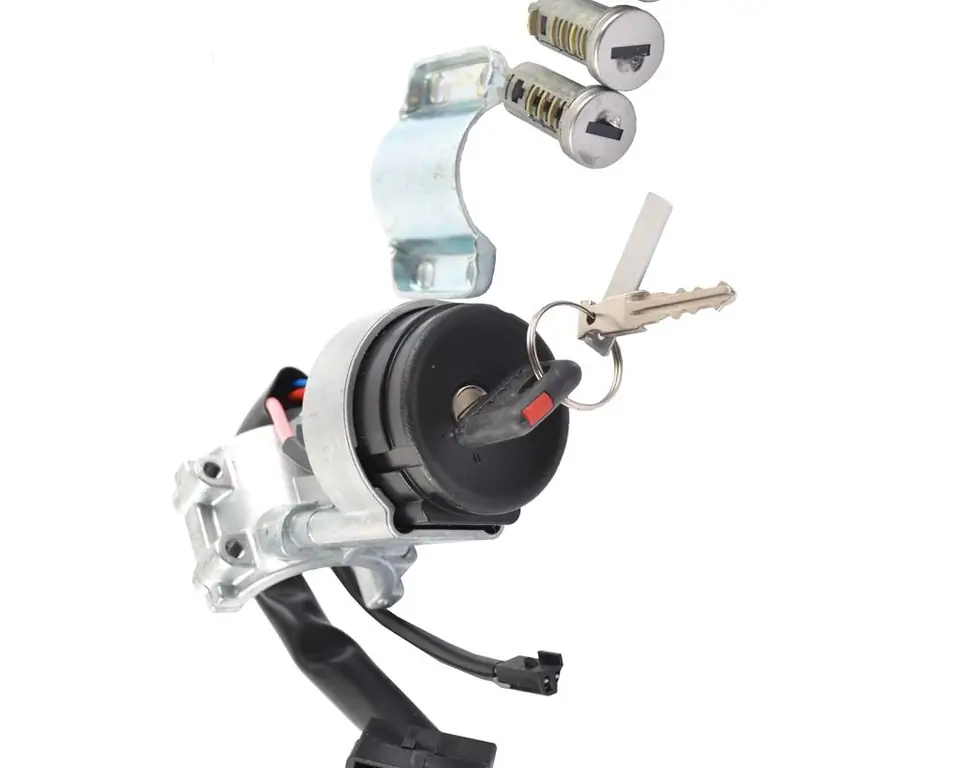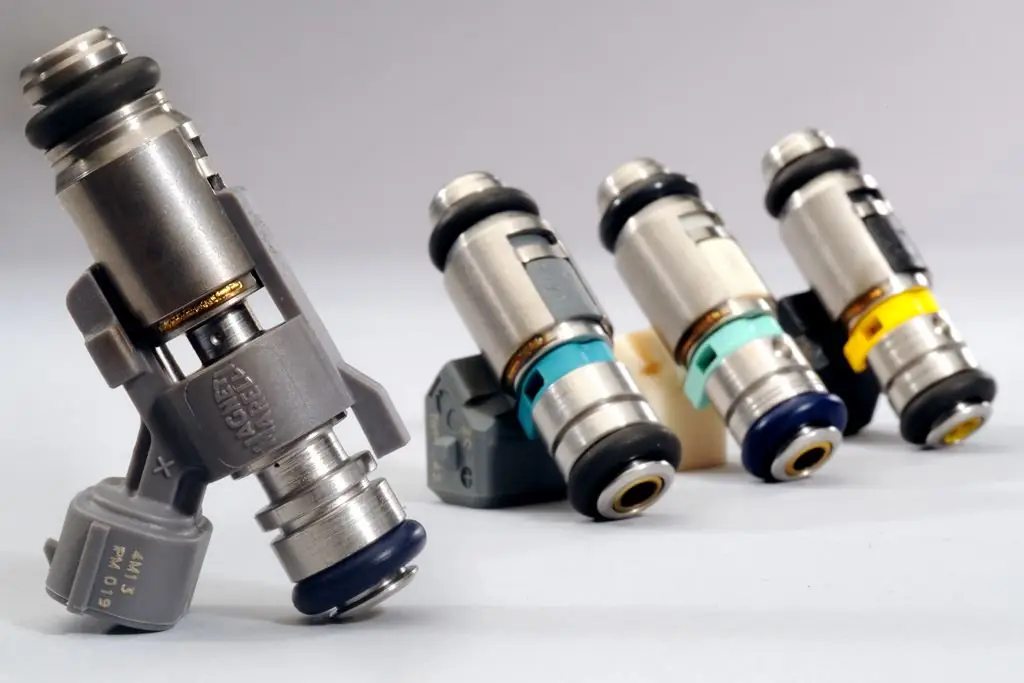2025 Author: Erin Ralphs | [email protected]. Last modified: 2025-01-22 21:14:11
Probably no secret that engine oil plays a key role in the overall configuration of the internal combustion engine. The main function of the lubrication system and the fluid itself is to prevent dry friction of the contacting surfaces of various engine elements, to eliminate processed products and contaminants, and to cool the parts.
Oil is supplied to some units of the power unit under pressure, others are lubricated by splashing, and some engine components are even processed only due to the natural flow of fluid onto them.
Difference between dry and wet sump
The most popular is the wet sump lubrication system - in it the oil is constantly in a special pan. When the engine is running, the oil pump draws grease from the sump and delivers it under pressure to the appropriate channels.
This solution is considered quite reliable and has been tested for decades. But this system is not without drawbacks and often simply does not cope with its functions in certain conditions. It is in such situations that a dry sump comes to the rescue, the principle of operation of which is slightly different from a wet unit.

Such a lubrication system is most often mounted on racing cars, but is sometimes found on off-road vehicles, agricultural machinery and sports cars. Among other things, today dry sump can often be found even on motorcycles.
Destination
So, a dry sump is a type of lubrication system for an internal combustion engine. Its demand among sports and racing cars is explained very simply. At the moment of passing dangerous turns, intensive braking and acceleration, as well as on fast descents and ascents, the car tilts, swaying longitudinally and transversely. At this time, the oil in the conventional wet sump splatters heavily throughout the system.
As a result, the fluid foams, the oil pump cannot take in splashing oil, which is why the engine does not receive the lubrication it needs. At the same time, the pressure suddenly drops, and the motor itself lends itself to significant wear. It is easy to guess that as a result, not only the engine resource is significantly reduced, but there is also a risk of its jamming, breakdown and overheating.

But the principle of operation of a dry sump implies a different device - the oil is located not inside it, but in a special tank. Thanks to this solution, the possibility of foaming the liquid is excluded. The injection pump supplies lubricant to the parts rubbing inside the engine. Moreover, the liquid flowing into the sump is immediately pumped back into the tank usingthe corresponding pump. Thanks to this, oil does not accumulate in the pan, that is, it remains dry. That's how this system got its name.
Dry sump engine assembly
The system is equipped with several basic elements:
- Special oil tank.
- Oil cooler.
- Injection oil circuit.
- Grease pressure sensor.
- Thermostat.
- Blow-off and pressure reducing valves.
- Exhaust pump.
- Temperature sensor.
- Oil filter.

Oil tank
The tank used in the dry sump system can be of various shapes. Inside the tank is equipped with special baffles that prevent vibrations and foaming of the oil at the time of the car's swing.
In addition, the tank is equipped with ventilation. It is necessary to eliminate gases and air from the tank that enter along with the grease from the sump.
In addition, the tank has thermostats, pressure sensors and a dipstick to check the liquid level. The tank itself is compact, allowing it to be installed in any suitable location.

By choosing the optimal zone, you can also successfully distribute the weight, which is extremely important for racing cars in terms of handling. Also, the principle of operation of the dry sump allows you to place the tank so as to improve its cooling and reduce the temperature of the lubricant.
Pumps
The pressure pump supplies oil to the systemunder pressure. In this case, the liquid passes through the oil filter. The pump is most often located just below the oil reservoir, which makes it possible to equip the required pressure. By the way, bypass and pressure reducing valves are responsible for its adjustment in the dry sump system.
The suction pump pumps out for moving the oil that has fallen into the sump back into the oil reservoir. Its performance is much higher compared to the pressure pump. The design provides several sections, depending on the characteristics of the motor.
If the internal combustion engine is highly boosted, there is one pump section in each crankcase fragment. V-shaped motors are also equipped with an additional section necessary for pumping out the oil supplied to the gas distribution element. The turbocharged engine is equipped with the same system to pump out the lubricant treating the turbocharger.
Both the suction and delivery pumps are gear type. They are in the same housing, and also have a common drive from the crankshaft. A little less common are systems with a camshaft. The drive can be both belt and chain.
Oil cooler
In a dry sump ICE, this part is represented by a liquid-cooled radiator. The part is located between the motor and the pressure pump. There are also other options when the radiator is located between the pump and the tank.
Forced internal combustion engines can be equipped with additional oil coolers, which are air-cooled elements. Such a radiator is connected to the system throughthermostat.

Benefits
As already mentioned, the principle of dry sump operation makes it possible to achieve stable lubricant pressure under any circumstances and conditions of movement of the machine. In addition, this system allows you to efficiently cool the oil, which is extremely important for forced internal combustion engines, which are very susceptible to fluid temperature.
Regarding the configuration features, the dry sump motor has a small sump, which significantly reduces the overall size of the power unit. Thanks to this, such an engine can be mounted a little lower, moving the center of gravity and increasing the stability of the car. In addition, due to this, the aerodynamic properties also change in a positive direction, since the bottom of such machines is flatter.
By the way, that is why all modern motorcycles with uprated engines are equipped with a dry sump. After all, it allows you to compactly place the lubrication system without compromising the technical characteristics of the device. So a dry sump for a motorcycle today is not a whim, but a necessity. At least for those that are designed for fast driving and have powerful forced internal combustion engines. It is this system that is presented in the most popular models: Honda Moto, Buell, EBR, KTM, BMW and other sports models.
The power of the dry sump engine is also slightly higher than that of the classic counterparts. These engines start and spin more easily because the crankshaft does not have to spin in the oil and fight against it.resistance. In addition, it does not splash liquid, which increases the density of the oil, it does not foam, and as a result, it is used less.
Another advantage of a dry sump is the fact that it minimizes contact of the lubricant with exhaust gases. Due to this, the oil oxidizes and ages more slowly. In addition, deposits and contamination do not accumulate in the sump, due to which the ICE lubrication system remains cleaner for a long time.
Oil circuits are located outside the engine. This makes it possible, if necessary, to identify the cause of the breakdown much faster and repair the motor, and without disassembling it. So it can be said that dry sump lubrication systems are more reliable and more convenient to operate.
Flaws
On the downside, a dry sump system is considered more complex and expensive. The presence of many auxiliary parts leads to a natural increase in weight. In addition, more lubricant must be poured into such a system.

So, internal combustion engines with such a lubrication system are several times more expensive, and the cost of maintaining them increases significantly, especially when it comes to repairing or replacing some elements. That is why a dry sump is not installed on most budget cars. After all, such machines, as a rule, are not designed for use in extreme conditions.
Conclusion
Despite the fact that the advantages of dry sump lubrication systems are verya lot, it should be understood: within the normal use of a civilian car, the driver is unlikely to feel a significant difference.

In other words, the installation of such a device is justified only in cases with racing, sports, rally cars, as well as SUVs designed to drive in extreme conditions.
Recommended:
CDAB engine: specifications, device, resource, principle of operation, advantages and disadvantages, owner reviews

In 2008, VAG group cars entered the automotive market, equipped with turbocharged engines with a distributed injection system. This is a 1.8 liter CDAB engine. These motors are still alive and actively used on cars. Many are interested in what kind of units these are, are they reliable, what is their resource, what are the advantages and disadvantages of these motors
The principle of operation of the variator. Variator: device and principle of operation

The beginning of the creation of variable programs was laid in the last century. Even then, a Dutch engineer mounted it on a vehicle. After such mechanisms were used on industrial machines
"Lada-Kalina": ignition switch. Device, principle of operation, installation rules, ignition system, advantages, disadvantages and features of operation

Detailed story about the ignition switch Lada Kalina. General information and some technical characteristics are given. The device of the lock and the most frequent malfunctions are considered. The procedure for replacing with your own hands is described
Damper flywheel: device features, principle of operation, advantages and disadvantages

The engine has a lot of critical components and mechanisms. One of them is the flywheel. It is this node that transmits the generated torque to the box through the clutch. Also, thanks to the flywheel, the engine rotates when the starter is engaged (when trying to start). In addition, the unit is designed to dampen vibrations and vibrations, and smoothly transfer forces to the box. In today's article, we will pay attention to such a type of mechanism as a damper flywheel
Carburetor and injector: difference, similarities, advantages and disadvantages of carburetor and injection engines, principle of operation and expert reviews

For more than a hundred years, the car has firmly established itself in our lives. During this time, managed to become a familiar, everyday means of transportation. Let's see what the difference is between a carburetor and an injector, what advantages and disadvantages they have

